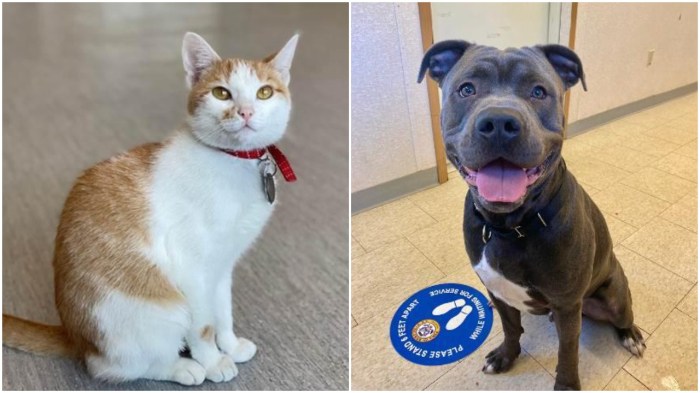Pet Behaviors: How to Understand Your Dog A Little Bit Better
To help pets thrive in our human world, it’s important that we have a basic understanding of their behaviors and natural instincts.
Sometimes we forget that dogs see the world differently than we do and can become stressed or anxious in certain environments or situations that a human might not think twice about. Imagine you’re outside with your dog and a stranger comes by and hugs you without warning – you’d probably become nervous and even frightened rather quickly, so chances are your dog feels the same way when approached by a new person or another animal.
Linda Keehn, a certified professional dog trainer, behavior consultant, and owner of Positive Canine Training, LLC begins by stating the basics.
“Your dog is not public property and deserves the basic right of autonomy of their own body,” Keehn says. “They have the right to say no, which they do in several ways, often times as subtly as taking a step back.
“A safe and effective way of introducing a dog to a new human begins by having the person pat their leg, inviting the dog over,” she continues. “If the dog doesn’t come, they are not interested in that interaction, and that’s their way of saying no.”
Similarly, the same oversight should be used during animal-to-animal interactions. Look for signs of anxiety or fear before proceeding.
It’s also important to understand that our emotional needs are quite different from that of an animal’s needs. Studies show that social interaction between people and their pets increases levels of the hormone oxytocin, likely the reason why we turn to them for emotional support.
“Most of the time this interaction is beneficial for both species, but we do need to make sure we’re not transferring our anxiety to the dog or forcing the dog into unwanted physical interactions,” says Keehn. “This goes back to the idea of autonomy. Let them have their space.”
One way to test their comfort level is to pet them and then stop. If they move away, it’s time to back off.
And some unwanted behaviors can be worked on and modified. For example, if your dog barks at the mailman, remember, they are instinctively doing their job to protect you and their home. But if that behavior becomes a nuisance, humans need to take control of the environment and access their own behavior.
Keehn suggests on a consistent basis, introduce the dog by walking him to the door and say, “this is the mailman, this is his job.”. This calming and positive explanation of how our world works will help the dog understand this is how they are expected to react when the mailman comes each day.
And this just scratches the surface. There’s so much to learn when it comes to understanding our furry friends, much of which depends on breed and the animal’s history.
Thankfully there’s an abundance of books and online videos to help pet parents get started. And for even more in-depth education, visit Keehn’s website at positivecaninetraining.com or info@positivecaninetraining.com.

































